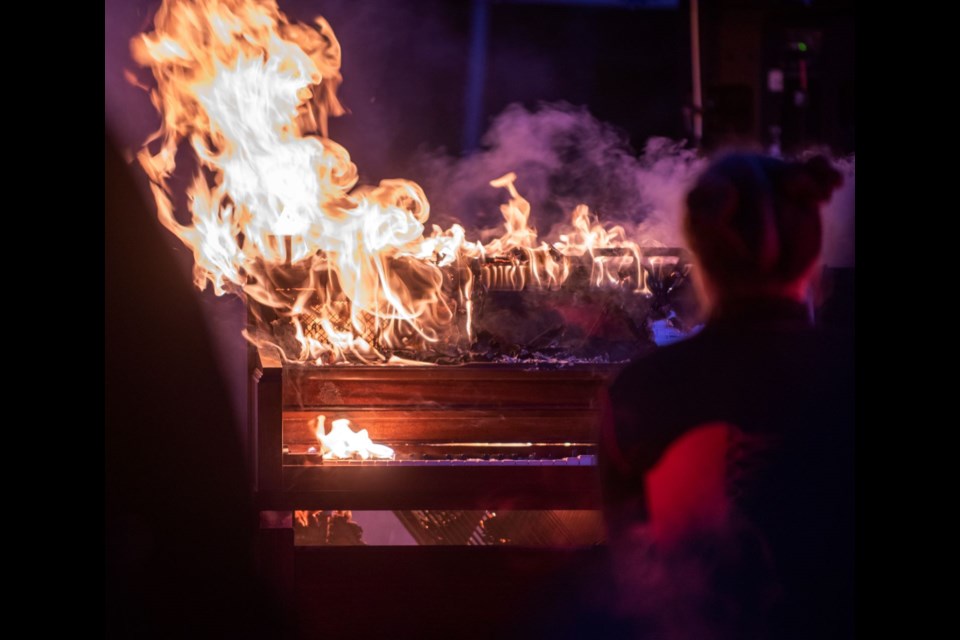By: Brendan Kergin, Vancouver is Awesome
An unusual sight lit the city’s only cemetery this past weekend.
On the evening of Sunday, Oct. 24, a piano was set on fire as a woman in a red (fire-proof) gown played two new songs.
This was a piece of transdisciplinary art, though a piece with plenty of ceremonial aspects, involving sound and visual pieces.
Rachel Kiyo Iwaasa, the pianist, was performing a local version of Piano Burning put on by the Queer Arts Festival (QAF) and Full Circle: First Nations Performance. Originally conceived of in 1968 by avant-garde composer Annea Lockwood, the local version carried extra meaning given the current state of the world, location, and participants, says SD Holman, the founding artistic director emeritus at the QAF.
A central theme has to do with the involvement of Indigenous peoples in the performance. Among other parts, there was a four directions dance preceding the piano performance, and the original songs played as the piano was lit on fire were created by local composer and member of the Lil’wat Nation Russell Wallace.
Piano Burning, in this context, resembled a fire ceremony. Fire ceremonies were a part of Coast Salish culture banned by the federal government along with potlatches.
“The music, the dance and all the ritualistic aspects of things were basically performed not openly in the community,” Wallace says. “Back in the 40s when the songs were coming back out, my mom was part of that movement of bringing the music back to the community.”
Through the flames items are sent to ancestors and those who’ve passed. For Holman it was a way to send music to their wife. For Wallace the ceremonial impact of his work didn’t hit until the piano his songs were being played and the piano was burning.
“I wrote it with the intention of sending music up to my parents who were both very supportive of me being involved in music,” he tells Vancouver is Awesome. “I had a moment there I was like, ‘Wow, this is kind of heavy with meaning.'”
Part of that weighty moment comes from the fact it was held in a cemetery. Holman notes another layer of the piece has to do with the fact a piano is an item from European and colonial cultures, while it was burned in a fire ceremony with many Indigenous aspects involved.
“Europeans burn things in effigy, it’s a violent concept,” she notes. “Indigenous people burn not what’s despised, but what’s cherished.”
Another aspect is an environmental statement, since the wooden object burns; the fact the performance had to be delayed due to the fire ban over the summer only adds to that. Additionally, there are the recent headlines about residential schools in Canada, a part of history that’s only recently been seeing more light.
“We have to learn to reconcile the difference between what we’re taught and the history we can no longer deny with all the residential schools,” Holman says.
Central to all the layers is the transformative nature of fire.
“It’s this beautiful thing; how we’re directly witnessing matter change to energy, just as we transform from matter to energy when we die,” says Holman.
Wallace wrote two pieces of music just to be played as the piano was destroyed. In both cases he leaned on Coast Salish styles to inform the songs.
“Being a knitter, I’ve knitted before, and patterns, repeating patterns, slightly altering them to create designs are important,” he says. “That was the idea of the compositions. Repetition with slight changes to create a design.”
Since he’d never written for piano before Iwaasa, the pianist in the flame retardant gown (and co-founder of QAF), helped. She had actually approached Wallace in the first place about creating the music.
While the music was central to the performance, Wallace notes the visual of the piano was interesting.
“Once it got darker and the piano was ablaze it was really visually striking and kind of felt like a big bon fire,” he says.
For those upset at the idea of a piano being destroyed, Holman notes it was donated after a long life of being used and recycled throughout the community. She also notes it was “not really a viable piano” anymore. Wallace says that the first thing to go on it, after it was set alight was the tuning (it was a cool day and fire is hot).

